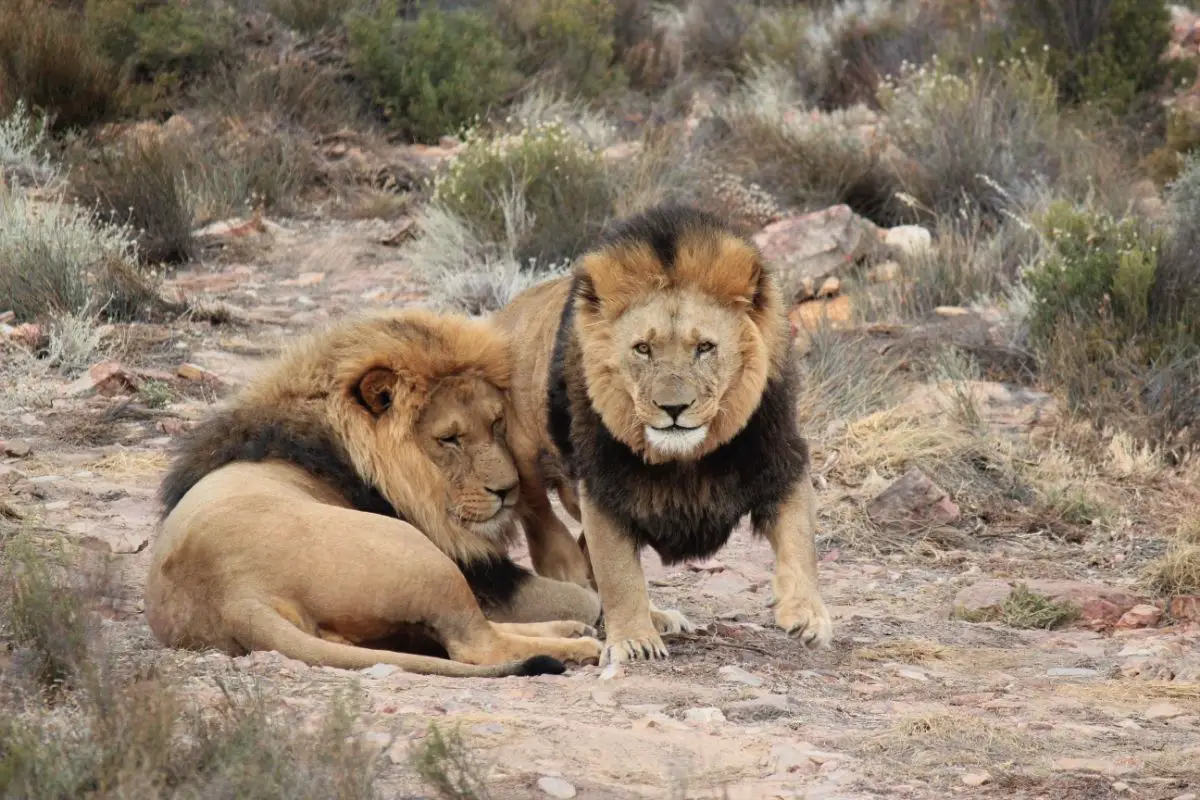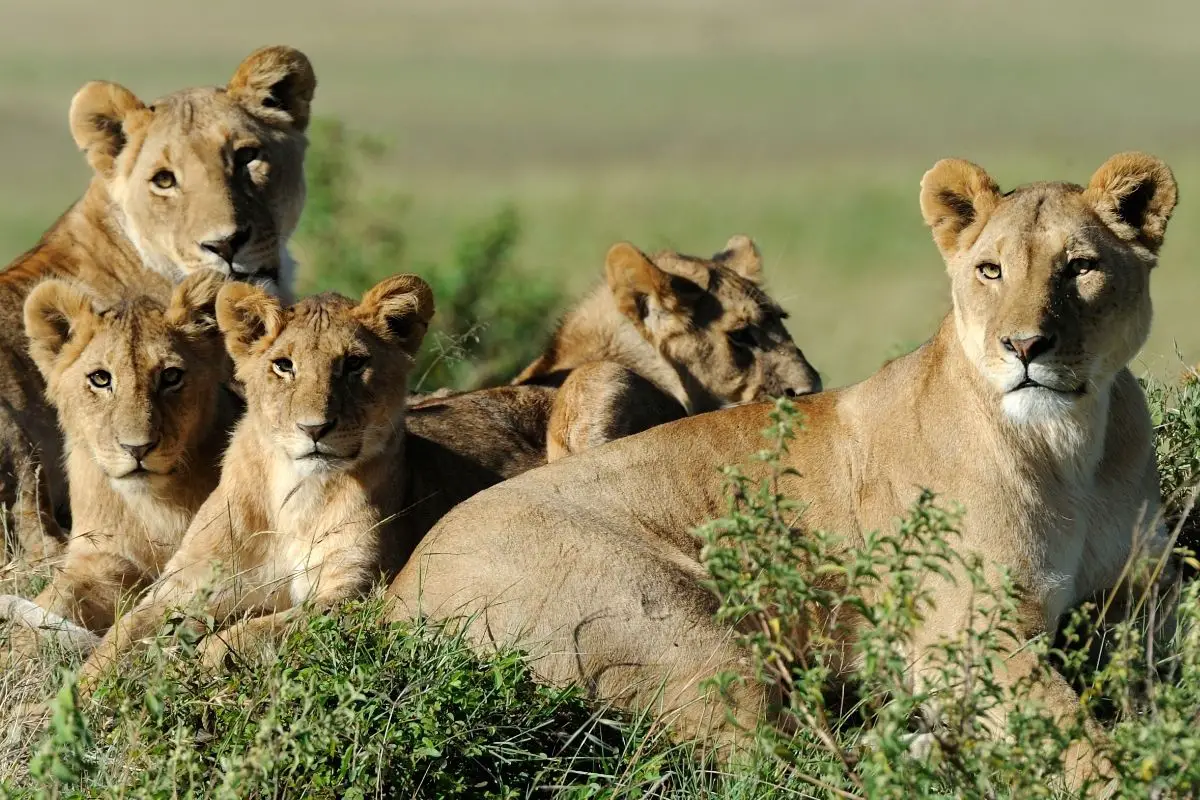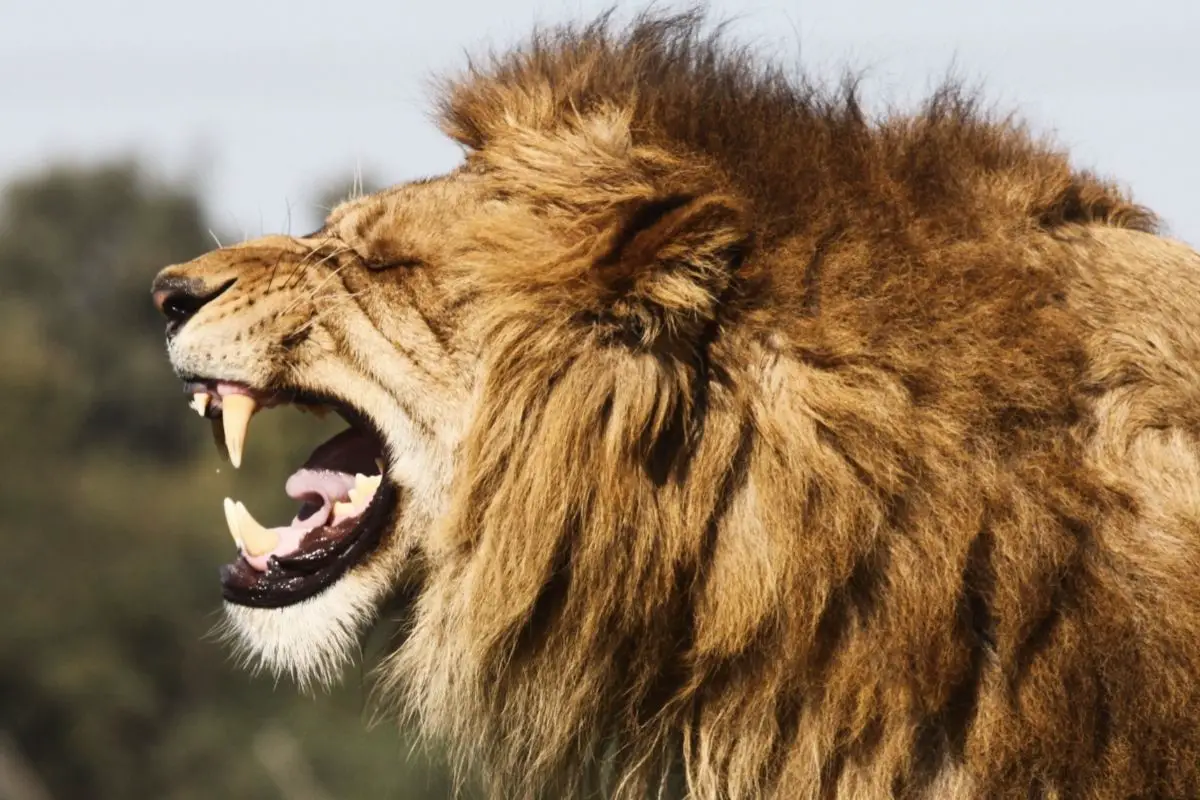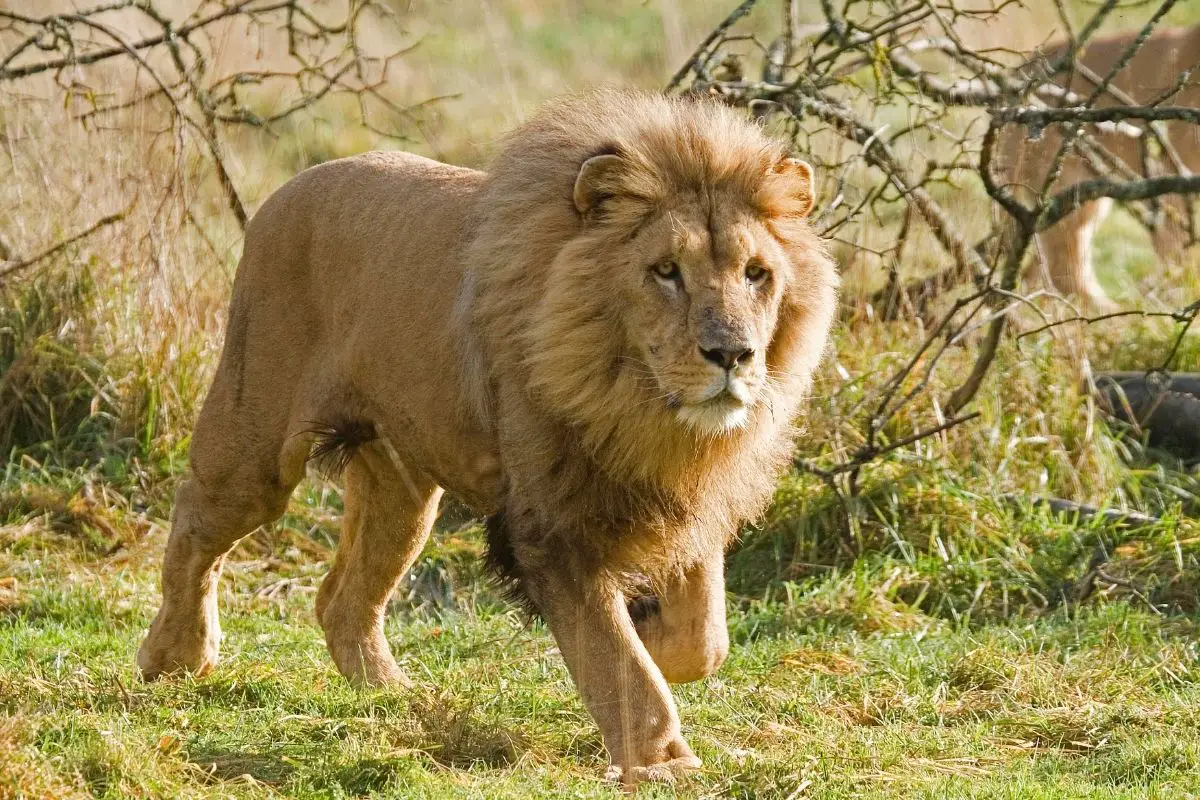Lions are often regarded as the King of the Jungle, even though most of them don’t actually live in the jungle.
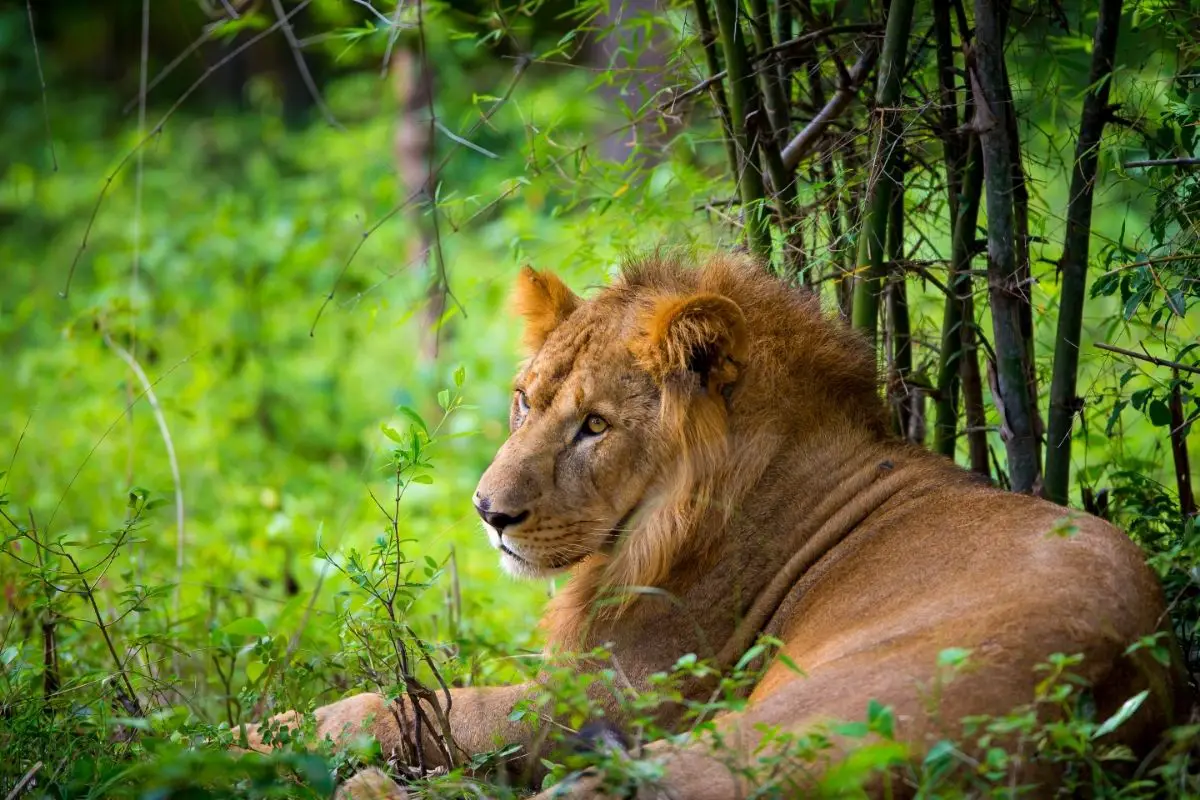
There are many types of lions and each is unique to its own location. Have you ever heard of the endangered Asiatic lion, cousins to the African lion?
In this article, we will be telling you everything you need to know about Asiatic lions, so read on to learn some cool things about these beautiful, endangered creatures!
What Is An Asiatic Lion?
The Asiatic Lion is one of the most well-known species of lion.
They belong to the Panthera leo population of lion subspecies, which are also the same subspecies African lions belong to.
They can be found in India, hence their name. They are extremely similar to the West and Northern African lions.
The key distinguishing characteristics of the Asiatic Lion are their smaller and darker manes which make their ears more visible and a longitudinal fold of skin that runs under their bellies.
They have tassels on the end of their tail that are longer than African lions.
Like all lions, they have sharp canines perfect for sinking into flesh and long, retractable claws in their paws.
Their fur can vary from sandy to greyish in color.
They usually hunt at night and can be quite passive for most of the day, resting and sleeping for up to 20 hours!
They are also a bit smaller than the African lions, but they are just as ferocious.
The males usually grow to between 2 and 3 meters in length and weigh around 190kg.
As with most animals, the females tend to be smaller, somewhere between 1.4 to 1.8 meters and they usually weigh around 130kg, but they can weigh less than that.
Asiatic Lions can live between 15 to 18 years in the wild, but in captivity, with the correct medical care, diet, and other circumstances, they can live up to 20 years of age.
Where Can You Find Them?
Asiatic lions are found most commonly in India, they have been found in a lot of places around Asia, such as Turkey, Pakistan, and Saudi Arabia in the past.
They like to live in dry forests and open grassy plains.
Though they have been found in these places, the Asiatic lion is considered an endangered species, and none have been found in Turkey, Pakistan, and Saudi Arabia since the late 1800s.
Unfortunately, they have been a prime candidate for poachers over the last century and that’s why there aren’t many of them left now.
The current number of Asiatic lions alive is between only 600 and 700 in the whole world.
In the modern day, you will only find them in Gir National Park and the Wildlife Sanctuary in the western Indian state of Gujarat.
The Wildlife Sanctuary is about 540 square miles, but only the central 100 square miles is actually fully protected as a National Park.
Because Asiatic Lions are protected in the Gir National Park and Wildlife Sanctuary, their dwindling numbers have slowly started to increase again.
What Is The Diet Of An Asiatic Lion?
All big cats are predators and carnivores, with a love for raw meat and Asiatic lions are no exception.
Some of their favorite animals to feast on are water buffalo, a type of spotted deer called chittal, nilgai (the largest type of antelope in India), and domestic cattle.
When the hotter summer months come around, they are also partial to crocodiles. Though they are mainly hunters, the Asiatic lions are known to scavenge too.
They will go to specific places within the protected area of the Gir National Park and scavenge from dead livestock that has been dumped there by livestock herders.
The Asiatic lions will go for any prey that has meat really, but they prefer larger prey that is usually bigger than their own body weight.
As with most lions, the females do the main bulk of the hunting. The males very rarely participate.
It has been suggested this is because the food options are more sparse as they live in a more concentrated area in comparison to their African cousins.
There’s simply not enough for large groups to attack most of the time.
The female lions bring the carcasses back to the pride and they usually squabble over who has first dibs.
Regardless of how these squabbles go, the cubs and young are always at the bottom of the chain in who gets the meat first.
Asiatic lions will also, on occasion, steal from wild dogs and hyenas.
Social By Nature
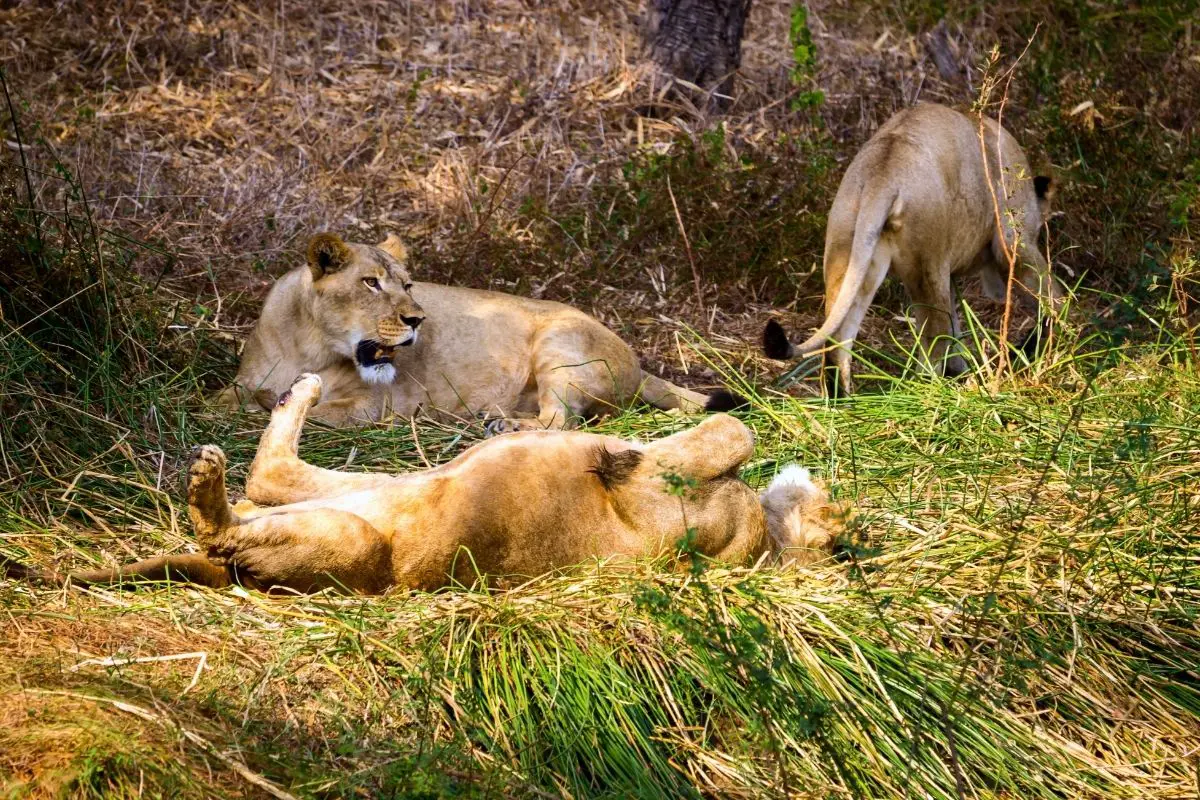
Like most lions, the Asiatic lions are social animals. But this applies more to the females than the males.
They live in prides which are usually led by an alpha male, but the alpha male only really interacts with the pride during mating season, on a large hunt, or when it’s under attack.
The males prefer to be solitary. Asiatic prides are noticeably smaller than African prides.
Lionesses are a part of the pride and they are all usually related. There aren’t usually more than a few lionesses per pride.
Then there are a few young lions and of course, cubs. Unlike the males, the lionesses are very social.
When the cubs come of age, the females stay with the pride and the males must leave the pride and go their own way.
As with most male lions, the Asiatic male goes on to find his own pride, taking it from weaker alpha males.
As the mating for the Asiatic lion is not seasonal, but all year round, the male lions mate with multiple partners during the mating season and once the lioness gives birth, she can have up to 4 cubs in one litter.
They nurse their cubs until they come of age.
Asiatic cubs begin eating meat at around 3 months of age but continue to suckle from their mother’s teets until they are around 6 months old.
For the first 9 months of their lives, they learn to hunt. Males reach sexual maturity at the age of 5, whereas females reach it at the age of 4.
Are Asiatic Lions Dangerous?
Lions of all kinds are apex predators, and adept in hunting and fighting. They have enough strength and power to take down an unarmed human being.
So yes, they are very dangerous. But because they are endangered, they rarely cross paths with humans.
That being said, it isn’t advised for you to try and interact with them.
Because humans have had such a large impact on their population, they are quite fearful of us and will be on the defensive if we get too close to them, and they are strong enough to take a human down with no issue.
So it is better to stay away from them.
Why Are Asiatic Lions Endangered?
As previously discussed, Asiatic lions used to be found all over Asia… it’s where they got their name from.
Now they can only really be found in protected areas of India and their population is closely watched.
There is a very small percentage of Asiatic lions that do live outside of the protected zone though. Humans used to hunt Asiatic lions for fortune and fame.
As the numbers dwindled to dangerous lows because of the excessive hunting, the Asiatic lions became protected, but people turned to poaching so they could still hunt them.
Luckily, if someone is caught poaching these lions now they will be arrested and convicted.
There are some other reasons Asiatic lions are endangered though that aren’t because of human intervention.
Forest fires are a big factor as well as encroachment, natural disasters, and calamities.
The threat of disease could also be an issue in the future because if an outbreak were to happen, their numbers are already small.
Mass death of the species could cause extinction. There are also concerns about the urbanization of the land around where the Asiatic lions live.
As urban areas grow and develop, the natural grasslands that these lions need decrease.
This could also be detrimental to their population because the lions need these open, natural environments to grow and flourish.
Because of the efforts of the wildlife protectors of the area, however, Asiatic lions are steadily increasing in numbers again.
Though 600-700 is still a very small number for a species, if the efforts are kept up, one day their endangered status could be a thing of the past again.
Conclusion
The Asiatic lions are an interesting subspecies of lions.
Though they are similar to the African lions, their darker, smaller manes give them a distinctive appearance that helps to differentiate them from other Panthera leo subspecies.
They may be a critically endangered species, largely in part due to the greed of humans, but luckily, their numbers are on the rise again thanks to the Gir National Park and Wildlife Sanctuary.
Who knows? Maybe one day we will see their numbers reach hundreds of thousands and maybe we will see them spread out across Asia once more!
- Sink Your Teeth Into This: Analyzing the Powerful Lion Bite Force - September 8, 2023
- Siberian Tigers: Everything You Need To Know - September 4, 2023
- Do Lions Eat Humans? Understanding Lion Aggression and Risks - September 4, 2023



